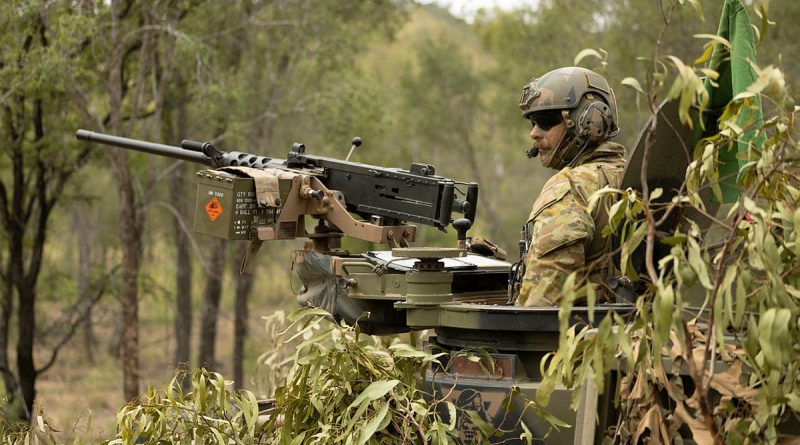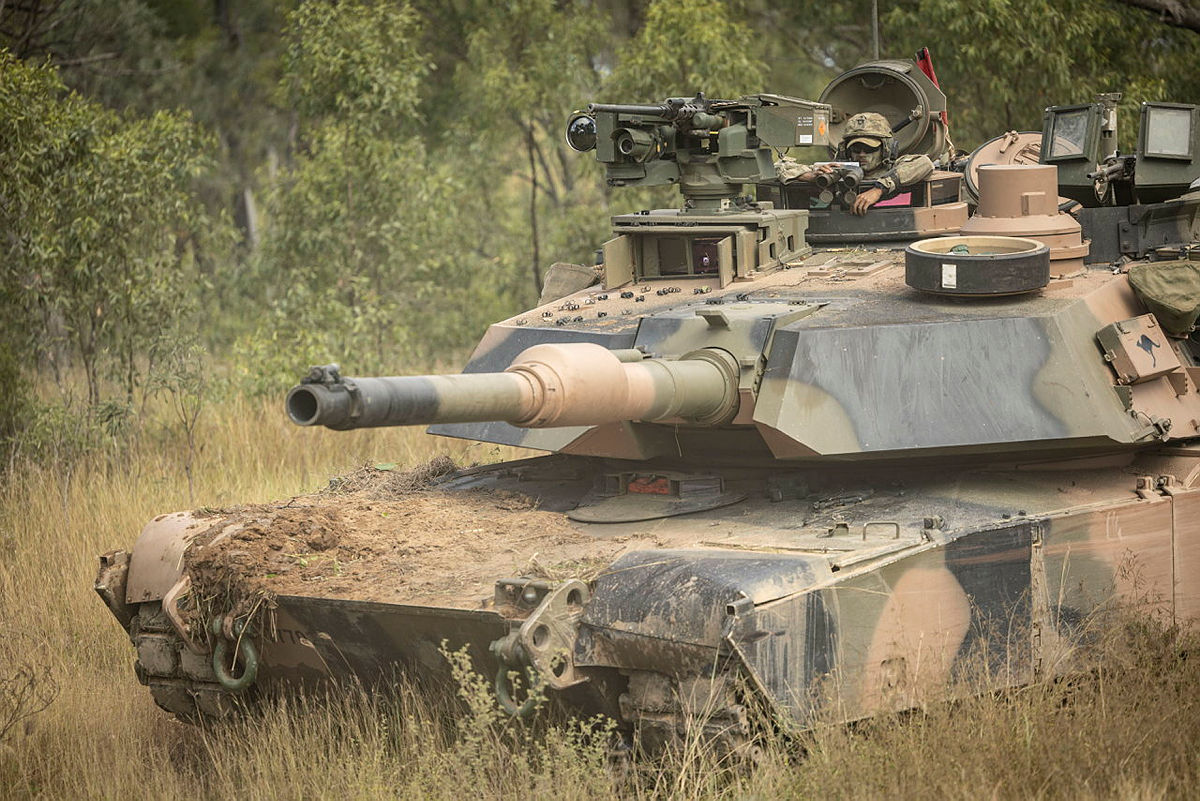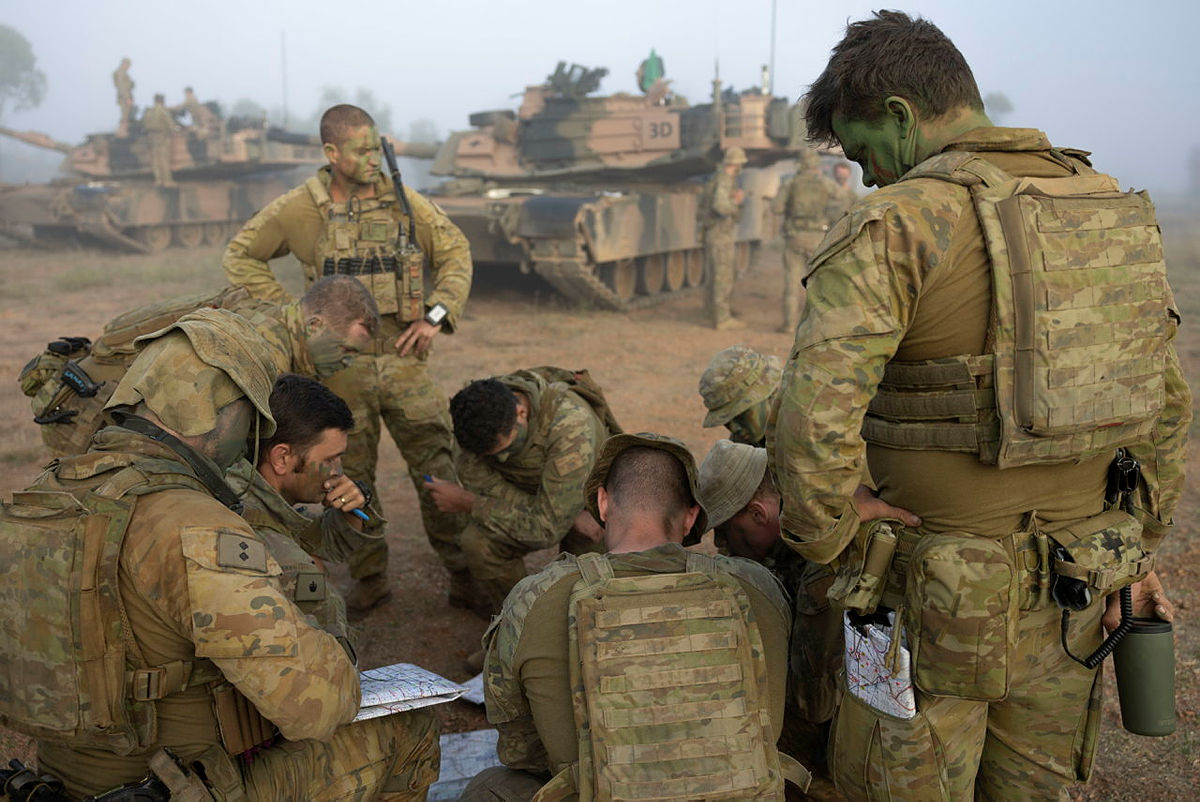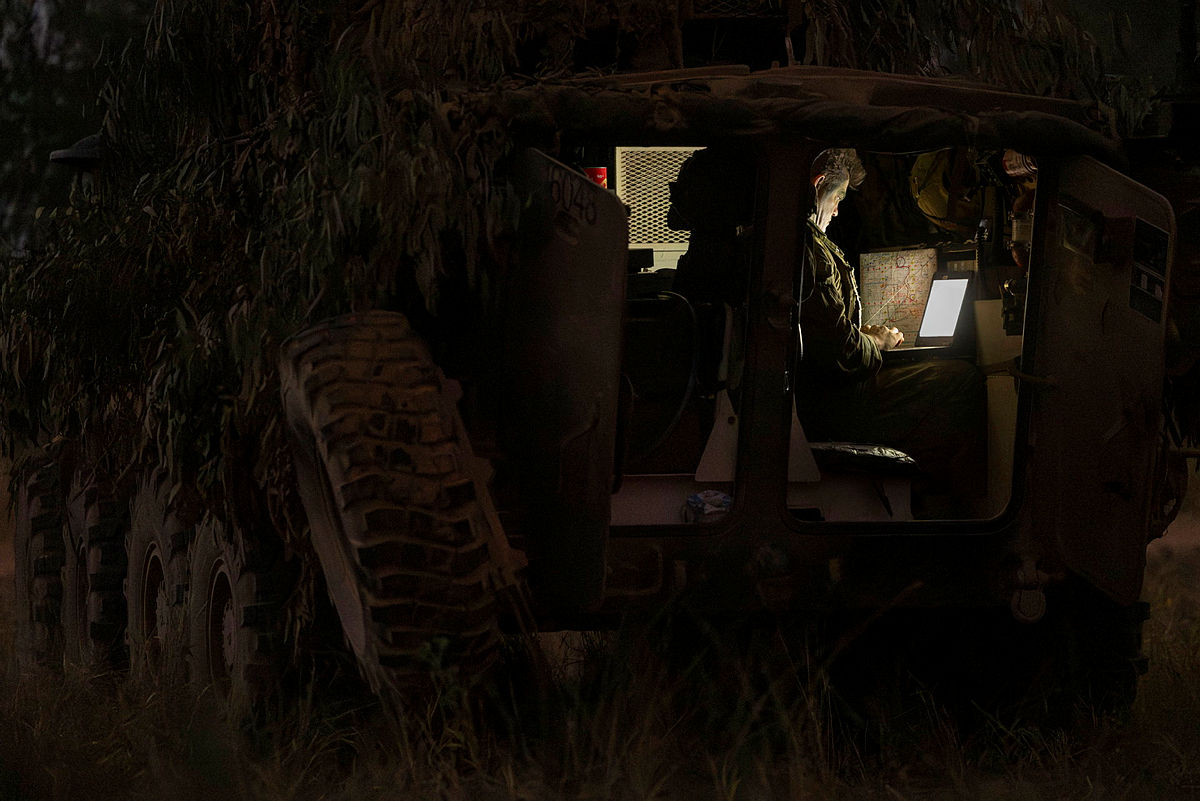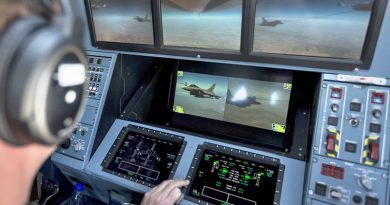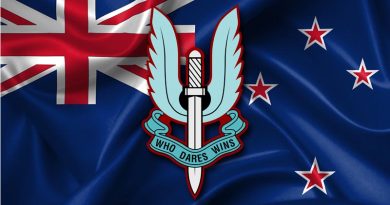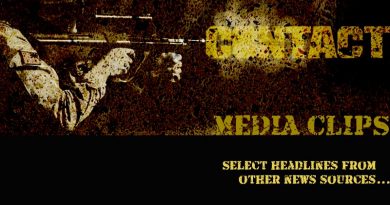Cavalry puts firepower on display

The sound of the chain gun on an Australian Light Armoured Vehicle (ASLAV) firing 25mm rounds is unmistakable.
CAPTION: A soldier from the 2nd Cavalry Regiment stands in his Australian Light Armoured Vehicle before a live-fire serial in the Townsville Field Training Area during Exercise Eagle March. Story and photos by Sergeant Matthew Bickerton.
A rhythmic sound of doof doof doof, reassuring friendly forces.
At 200 rounds a minute, static or on the move, it leaves devastation in its wake.
Target acquired. Rounds fired.
“Two Zero, this is Victor Two Zero, contact ZBD, wait out,” comes over the radio.
Just 50 metres away, the Army’s newest armoured platform – the hard-hitting M1A2 Abrams main battle tank – fires its 120mm main gun, obliterating enemy armour with pinpoint precision.
CAPTION: An Australian Army M1A2 Abrams from the 2nd Cavalry Regiment during a live-fire practice for Exercise Eagle March.
“Two Zero, this is Tango Three Three Alpha, this call sign has engaged and destroyed three by adversary high-value targets.”
This attack formed part of the 2nd Cavalry Regiment’s Exercise Eagle March, a squadron-level live-fire activity held at the Townsville Field Training Area from May 12 to 16.
The regiment’s Commanding Officer Lieutenant Colonel Josh Higgins said the focus was on tactical tasks the unit’s teams were expected to perform.
The exercise also incorporated cultural awareness, language training and casualty care with moulage (simulated injuries).
“At times, subordinates were required to step up a level and assume their supervisor’s duties, taking them close to the threshold of their expertise,” Lieutenant Colonel Higgins said.
Officer Commanding B Squadron Major Alexander Bennett, who led two ASLAV troops and one tank troop, said the warfighting aspect was relatively straightforward.
But managing competing priorities – such as partner force development, care of the battle casualty and losing vehicles to mud – truly pushed him and his squadron.
CAPTION: Army officers from the 2nd Cavalry Regiment coordinate movements during Exercise Eagle March.
One of the more confronting scenarios was testing of legal duties and the laws of armed conflict, particularly managing partnered force relationships.
In the scenario, the foreign nation Major Bennett worked with acted in ways that appeared to contravene laws of armed conflict.
During a simulated tribunal, notionally held in Australia months later, Major Bennett faced an inquiry and media questions designed to test his operational conduct.
“Even though it wasn’t real, it was very confronting,” Major Bennett said.
“The way I handled it was simply to tell the truth.”
Officer Commanding C Squadron Major Ben Sheppard, who led two tank troops and one ASLAV troop, faced the same scenario and described it as equally confronting.
These scenarios helped create a sense of realism that comes with operating in complex environments.
Eagle March marked the first time Army’s new M1A2 Abrams tanks conducted advanced collective live-fire training.
Major Sheppard said tanks and ASLAVs complemented each other well.
“ASLAVs can move quickly, find and locate enemy forces, identify surfaces and gaps, and cue heavy armour onto enemy positions, or onto a possible flank to bypass them,” he said.
“Tanks have the ability to then move at speed, detect threats and destroy them. That’s really what we’re talking about when we talk about a tank squadron.”
Major Bennett said this meant 2nd Cavalry Regiment was not only a reconnaissance force, it was also a strike and protection force, capable of executing the full spectrum of offensive and defensive actions.
CAPTION: Before reveille, Commanding Officer of the 2nd Cavalry Regiment, Lieutenant Colonel Josh Higgins, works on his laptop in the back of his Australian Light Armoured Vehicle (ASLAV) in the Townsville Field Training Area during Exercise Eagle March.
.
.

.
.

